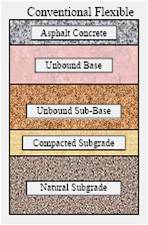Vanderbilt University
Engineering Capability Brief
Probabilistic Methods for Reliable Pavement Design
VU Station B 351831, Nashville, TN 37235; 615-322-3040; fax 615-322-3365
jennifer.q.retherford@vanderbilt.edu

Introduction: This research project incorporates reliability based design approach to the Mechanistic-Empirical Pavement Design Guide (MEPDG). It is proposed that reliability analysis based on probabilistic methods for uncertainty quantification implemented within the MEPDG would provide significant benefits to the highway community, by providing a basis for quantifying the benefits of quality control and quality assurance. The use of an appropriate reliability method also enables the design engineer to account for uncertainty in the design parameters and to design pavements accordingly.
Methodology: Since the current analysis code utilized by the MEPDG is computationally expensive to evaluate for purposes of reliability analysis and optimization, it is necessary to construct a trustworthy surrogate model that will allow designers to approximate the analysis results of the MEPDG quickly and accurately. Validation of the surrogate model using both classical and Bayesian hypothesis testing, and model selection studies using Bayesian techniques are pursued to develop confidence in the surrogate model prediction.
It is also vital that pavement engineers understand which inputs are most important to the MEPDG. It is highly unlikely that the MEPDG is highly sensitive to all 3,000 input parameters found in the MEPDG design procedure. Although the MEPDG utilizes thousands of input parameters, there is a limited few with greater influence on the pavement design process than others. Experience with pavement analysis and design would suggest that the most important parameters would be layer thickness, material properties, and traffic volume.
Relationships between design parameters and failure distress modes can be easily visualized by contour plots (as shown below) created from results of the surrogate model; performed in a fraction of the time required to create such plots with the current MEPDG design software. The model can be executed many times and statistical tests based on Generalized Linear Models and ANOVA can be performed to identify the dominant parameters.
The final task is pavement design optimization under uncertainty. The process exploits the surrogate model within Monte Carlo Simulation to evaluate the reliability of a specific pavement design. Lifecycle cost analysis is also incorporated into the design optimization.
Application: Flexible pavement design is the primary focus of this work; however, these methods are applicable to mechanistic-empirical design methods for all pavement types, such as rigid pavements.